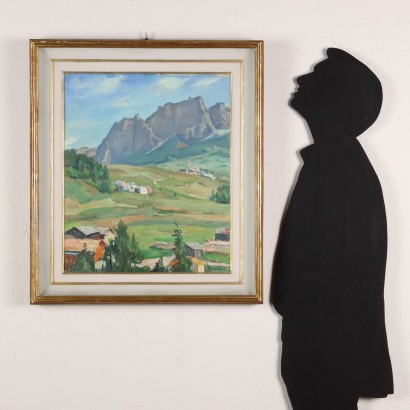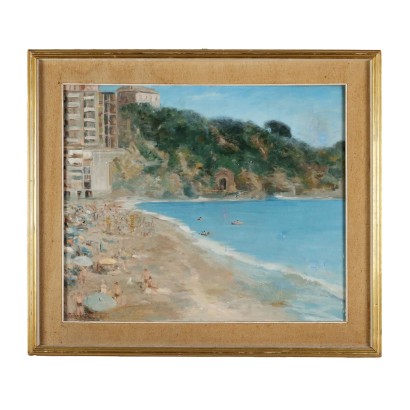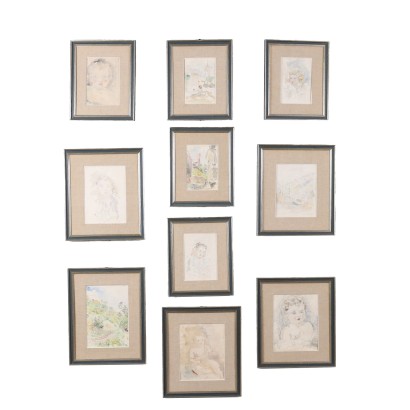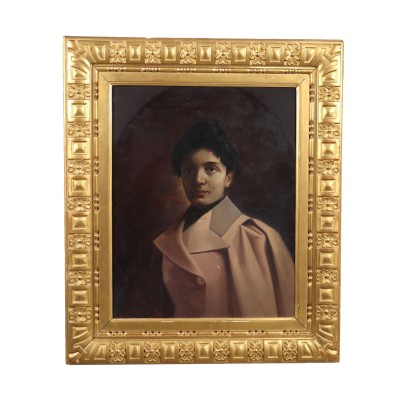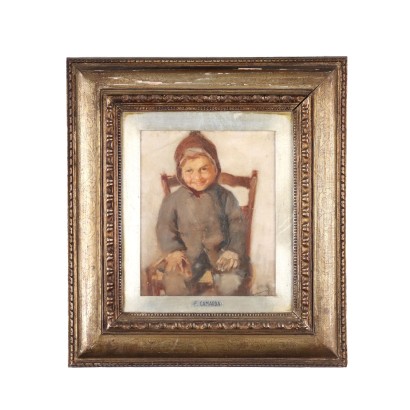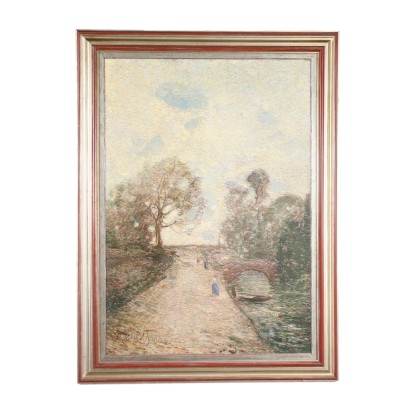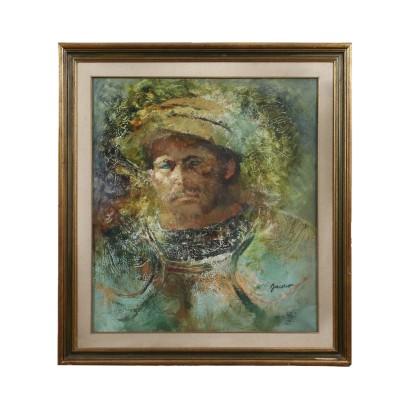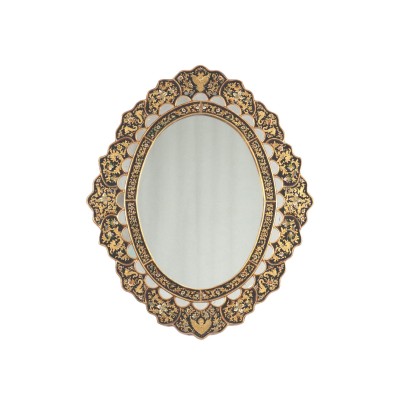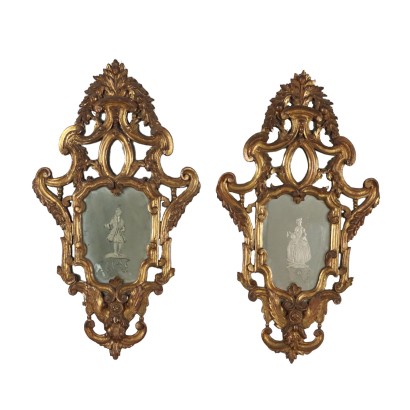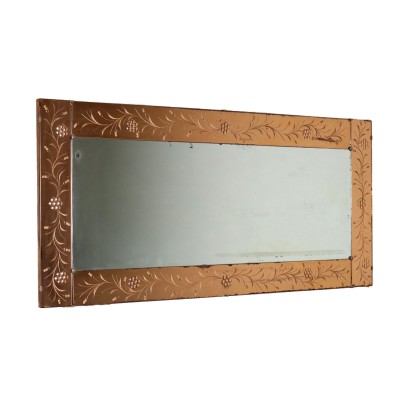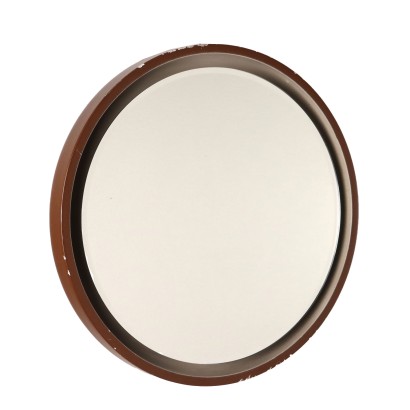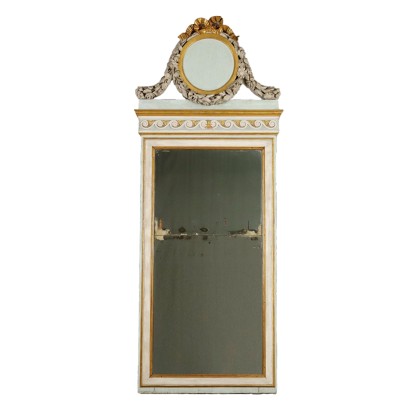R. De Grada Oil on Canvas Italy XX Century - Campo di Sopra Cortina d'Ampezzo
Features
Campo di Sopra Cortina d'Ampezzo
Artist: Raffaele De Grada (1885-1957)
Artwork title: Campo di Sopra, Cortina d'Ampezzo
Age: 20th Century / 1901 - 2000
Subject: Landscape
Origin: Italy
Artistic technique: Painting
Technical specification: Oil on Canvas
Description : Campo di Sopra, Cortina d'Ampezzo
Oil on canvas. Signed lower right. The title on the back on the frame. At the origin of the painting of Raffaele De Grada, who loved nature, was above all a landscape painter, we can find the lesson of Cézanne, above all in the reconstruction of the landscape "modern, almost geometric, but always linked to nature and the state of mind ”. After the 1920s his painting moved towards the search for essential and decisive colours, which characterize his works, rigorous in content, with more melancholy and twilight atmospheres. The work is presented in a frame.
Product Condition:
Product in good condition, shows small signs of wear. We try to present the real state as fully as possible with photos. If some details are not clear from the photos, what is reported in the description will prevail.
Frame Size (cm):
Height: 78
Width: 68
Depth: 7
Artwork dimensions (cm):
Height: 60
Width: 50
Additional Information
Artist: Raffaele De Grada (1885-1957)
Raffaele De Grada was born in 1885 in Milan to a decorator father of a Tiepolesque nature, he emigrated to Argentina in 1890, then to Switzerland (1899) to Zurich where, at the age of fourteen, he began to paint his first landscapes. In 1903 he enrolled at the Dresden Academy, moving after two years to Karlsruhe, where he remained until 1908, taking German naturalism as his first artistic reference. The study of the French impressionists and the knowledge of Cézanne, fundamentally influenced his painting. In 1919 he definitively left Switzerland for San Gimignano, where in 1915 he had married Magda Ceccarelli. In Italy his main interests focused around the study of nature, light and color and De Grada began new research which, on the basis of Cézanne's lesson and his knowledge of the Tuscan primitives, led him to a "modern, almost geometric, but always linked to nature and mood”. In 1922 he moved to Florence, participating between 1920 and 1930 in the intense cultural life and coming into contact with numerous writers and artists. His painting was noticed by Sarfatti, Sironi and Carrà, with whom he became friends. Following the birth of the "Novecento" group in Milan in 1922, De Grada was commissioned to organize the participation of Tuscan artists in the first exhibition of this group which was held at the Permanente in the spring of 1926. From this moment on he took part in all the "Novecento" exhibitions in Italy and abroad, even if one cannot speak of his true adherence to the movement from which, while sharing the ideas of construction and the return to primitive purity, differed, as Guttuso states, for “its purity, for its feeling for nature, for its honesty in looking, in understanding, in transposing. Without overlapping with nature, without linguistic preconceptions”. In 1928 the Venice Biennale hosted one of his solo shows for the first time and in 1930, after a few successful exhibitions, he decided to settle in Milan. He obtained the chair of drawing and figure at the Higher Institute of Art of Monza, where he had as colleagues Arturo Martini, Marino Marini, Pio Semeghini, Achille Funi; but, due to his refusal to take the Fascist party card, he was forced to leave teaching at the outbreak of the conflict. Through his son Raffaele, who dedicated himself to art criticism, his studio began to be frequented by younger artists, such as Guttuso, Birolli, Manzù; in the last years of his life he divided his stay between Milan and the Tuscany he loved so much.
Age: 20th Century / 1901 - 2000
20th Century / 1901 - 2000
Subject: Landscape
Artistic technique: Painting
La pittura è l'arte che consiste nell'applicare dei pigmenti a un supporto come la carta, la tela, la seta, la ceramica, il legno, il vetro o un muro. Essendo i pigmenti essenzialmente solidi, è necessario utilizzare un legante, che li porti a uno stadio liquido, più fluido o più denso, e un collante, che permetta l'adesione duratura al supporto. Chi dipinge è detto pittore o pittrice. Il risultato è un'immagine che, a seconda delle intenzioni dell'autore, esprime la sua percezione del mondo o una libera associazione di forme o un qualsiasi altro significato, a seconda della sua creatività, del suo gusto estetico e di quello della società di cui fa parte.
Technical specification: Oil on Canvas
The oil painting is a painting technique using powder pigments mixed with bases in inert and oils. Other customers have searched:




